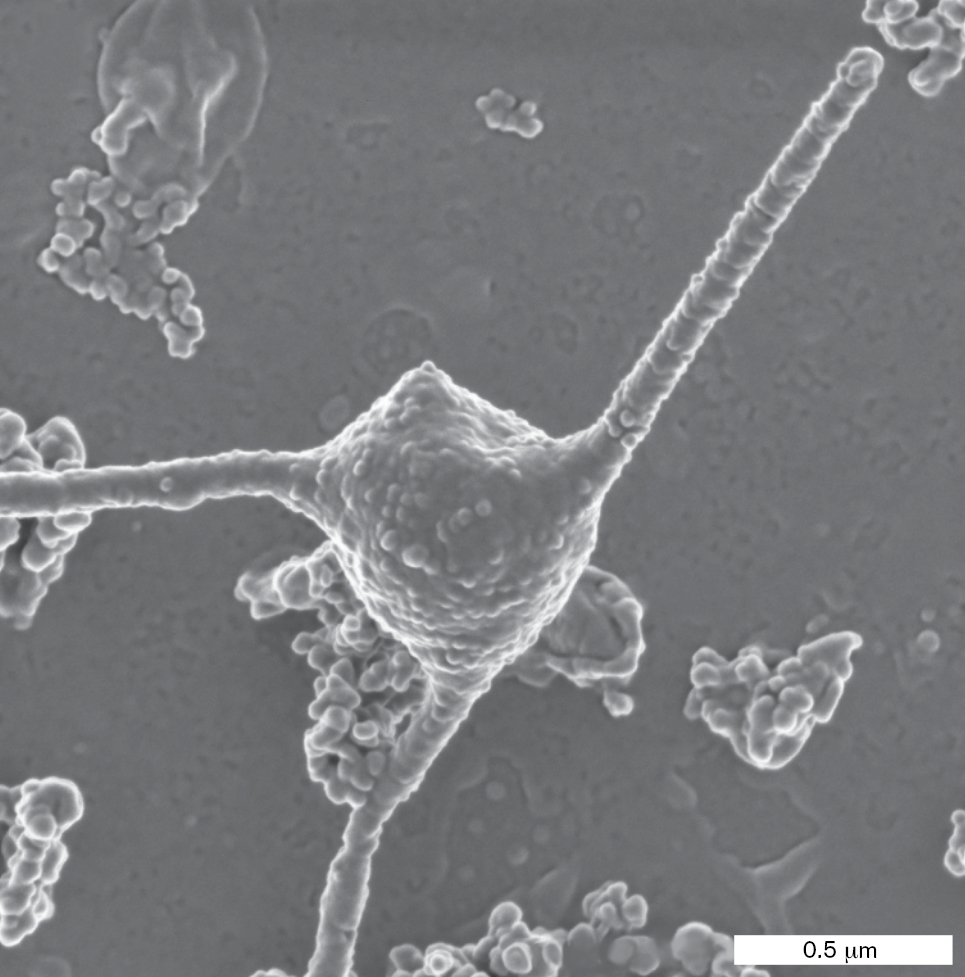Microbial Life: Origin and Discovery

More information
A micrograph shows a circular cell, about 1 micrometer in diameter, with three extended tentacle features. Other irregular cell shapes are visible in the background.
An archaeon isolated from a methane seep 2.5 km deep in the ocean at Nankai Trough, off Japan. The tentacled cell has DNA sequences that suggest shared ancestry with the earliest eukaryotes—cells that gave rise to animal life, including humans. Source: Hiroyuki Imachi et al. 2020. Nature 577:519.
|
Chapter Sections |
Learning Objectives |
|
|
» |
Explain what a microbe is, and identify major categories of microbes and microbial communities. |
|
|
» |
Describe how microbial communities and infectious diseases have shaped human history. |
|
|
» |
Explain how key discoveries advanced our understanding of microbes in medicine, including health disparities. |
|
|
» |
Discuss how environmental discoveries revealed the roles of microbes in our global biosphere. |
|
|
» |
Explain the genomic basis of our understanding of microbial phylogeny. |
|
|
» |
Describe how key advances in cell and molecular biology have shaped our modern view of microbes. |
|
|
eResearch Activity 1 Do Bacteria Make Neurotransmitters for the Human Brain? |
||
Microbes grow everywhere, from the deepest ocean to the human body. Our own bodies contain as many microbes as human cells, including 100 trillion bacteria in the digestive tract. Throughout history, humans have had a hidden partnership with microbes that ranges from food production to mineral mining. Microscopes first revealed the tiny organisms at work in our bodies and in our environment. In the twentieth century, microbial genetics led to recombinant DNA and sequenced genomes. Today, we discover the microbial foundations of our global ecology and climate.
What are these microbes? From childhood, we hear that we are surrounded by microscopic organisms, or “germs,” which we cannot see. In 2019, a novel virus emerged and caused a disease, COVID-19, that upended human society all around the globe. The disease-causing microorganism, a coronavirus known as SARS-CoV-2, changed the course of history.
Earlier, in the 1980s, a very different microbe—the thermophilic bacterium Thermus aquaticus—provided the first heat-stable DNA polymerase of the polymerase chain reaction (PCR). Today PCR makes our most accurate test for infection with the coronavirus, providing our best defense against it. Overall, PCR has changed human history by reading genomes and transforming forensic detection.
In Chapter 1 we introduce the concept of a microbe and survey the history of microbial discovery. We explain how to show which pathogen causes a disease. Finally, we address the exciting century of molecular microbiology, in which microbial genetics, genomics, and evolution have transformed the practice of medicine and our understanding of the natural world.